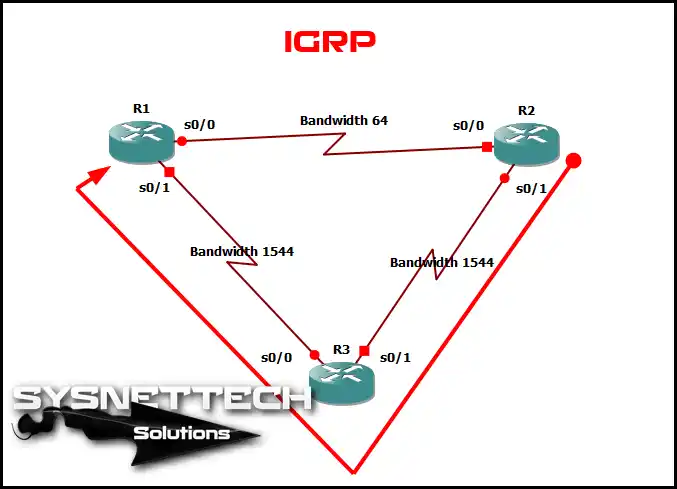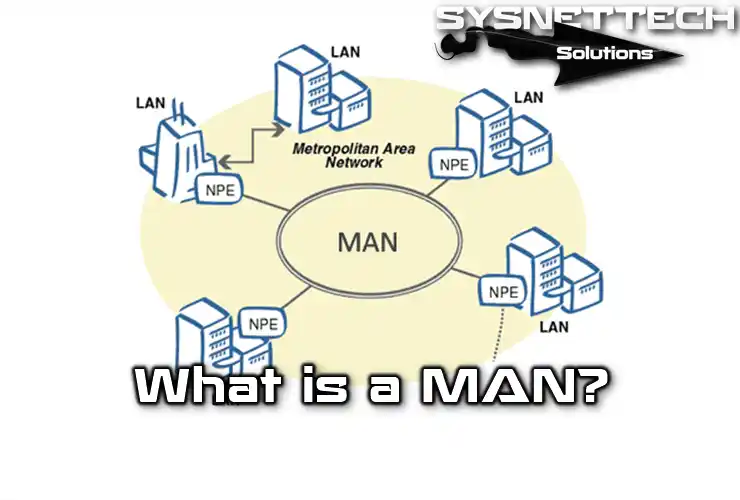IGRP (Interior Gateway Routing Protocol) is a way for data to travel through a network. In our modern world, computer networks help us communicate quickly and effectively. But when setting up this communication, we use specific routing protocols like this.
Take, for instance, this protocol made by Cisco Systems. Routers in the network use it to figure out the best way to send data packets. They do this by talking to their neighbors and sharing details about the distance and direction to each target network. In this guide, we’ll dive deeper into what IGRP is and how it does its job.

What Exactly is the IGRP Protocol in Computer Networks, and How Does It Work?
Cisco made a thing called IGRP in 1985. But later, in the 1990s, they made a better version called EIGRP. They used these things a lot in Cisco networks. Some old Cisco Routers still use them. It’s essential to know how they work on old networks, even if those networks are ancient.
Interior Gateway protocol and RIP routing are alike, but they have some differences. The only difference between them depends on how you set them up. For instance, RIP can only go through a maximum of 16 hops. In short, this protocol makes up to 255 hops.
So, it is a Distance Vector protocol. In this case, when choosing the best route, it uses:
- Bandwidth
- Delay
- Reliability
- Load
- MTU (Maximum Transmission Unit)
This thing called the Administrative Distance (AD) has a value of 100 for this protocol. The AD value for RIP is 120. So, this one is more important than RIP. Let’s say you turned on both of these in a network. In that situation, this one (IGRP) will be more important.
But, if you don’t choose a Bandwidth value, it will just use 1.5 Mbit Bandwidth by default. So, the main thing that makes it different from RIP is that this protocol uses AS (Autonomous System).
The idea of using bandwidth is to talk over the quickest connection. So, imagine we have two connections – one at 64 Kbit and another at 1.5 Mbit. In this case, the Router sends the packet using the faster connection (1.5 Mbit).
In this way of doing things, only routers with the same AS number can talk to each other. You set up the AS number based on how you plan the network.
What are the IGRP Features?
Now, let’s check out what interior gateway protocol can do and how it helps your network.
- Classful Routing Protocol
One big thing about this way of doing things is that it’s classful. This means it doesn’t include information about subnet masks in its updates. This can be good in a simple network, as it cuts down on extra traffic.
- Distance Vector Protocol
Because it’s a distance vector way of doing things, it figures out the best way through the network. But in this case, it uses a variety of measurements. For example, It looks at bandwidth, latency, reliability, and load. Then, it sends data through the network using the best way it figured out with these measurements.
- Supports Many Metrics
It looks at different things when deciding the best way for data to go in the network. This means you can pick what’s most important for your network. For instance, if time is crucial, you can make latency the top priority.
- Supports Equal-Cost Load Balancing
Another cool thing is that it helps spread the work evenly. It balances the traffic well, especially when there are many routes with the exact measurement. So, if one way gets crowded, it keeps things moving smoothly and makes the network work better.
Other Features in Brief
- It’s a Distance Vector protocol.
- It’s a Classful protocol.
- There is no support for CIDR.
- There is no support for VLSM.
- It uses Bandwidth and Latency by default.
- It can also use Reliability and Load.
- It sends a routing table every 90 seconds.
- The Hop Count value is 100, but you can set it up to 255.
- It doesn’t support authentication.
- It uses Triggered Updates.
- Applies Poison Reverse and Split Horizon techniques.
- The Administrative Distance value is 100.
- It works well in large networks.
The Advantages and Disadvantages of IGRP
If you’re someone who manages networks, it’s essential to know what it means for a business network. That way, you can set up your system with a routing plan that fits what you need. So, understanding the good and not-so-good sides of this protocol is crucial.
Pros
- Convergence: It helps things come together quickly. So, it adjusts right away when there are updates or changes in the network.
- Metrics: It allows data to be sent in the easiest way possible. In this case, as we said, it uses metrics such as bandwidth, latency, reliability, and load. That is, it makes sure the path it picks is the best and most dependable.
- Scalability: It can work with a lot of hops, up to 255 of them. In particular, this makes it a good choice for extensive networks.
- Compatibility: Gets along nicely with other Cisco routing systems. So, it can be helpful in an existing network.
- Classful routing: It makes routing simpler, but it might need to use network resources better. That’s because it doesn’t think about how extensive the network is or how many computers there are.
Cons
- Proprietary: It is a special kind of protocol made only for Cisco routers. So, of course, it is not compatible with devices from other vendors.
- Distance vector: Because it’s a distance vector, it doesn’t consider the whole network when deciding how to route things. Thus, it might pick paths that could be better.
- Slow convergence: Although its convergence is generally fast, it is slow in more extensive networks. So, it can cause extended downtime and a less efficient network.
- Limited path selection: It picks only four paths and only gives you a few choices for how to route things.
- Classful routing: It makes routing simpler, but it might need to use network resources better. That’s because it doesn’t think about how extensive the network is or how many computers there are.
IGRP Bandwidth Usage
The following example of bandwidth usage refers to the transmission of packets over the fastest connection.

Interior Gateway Routing Protocol Timers
- Update Timer – 90 Seconds.
It sends routing updates every 90 seconds.
- Invalid Timer – 270 Seconds.
Update Timer x 3 = Invalid Timer.
Specifies the period after which the Router will invalidate that network from its routing table if it cannot reach a network. In short, the Router did not receive an update for a route. In this case, it waits that long to report that route as invalid.
- Hold Down Timer – 280 Seconds.
Update Timer x 3 + 10 Seconds = Hold Down Timer.
This is the amount of time the Router cannot reach a network or increases the route metric. That is, it indicates the waiting time before adding a new route. It will then only accept a change for the route once the time runs out. In short, the Hold Down Timer prevents routing loops that may occur on the network.
Also, the Hold Down Timer is 280 seconds by default.
- Flush Timer – 630 Seconds.
Update Timer x 7 = Flush Timer.
The Router uses a Flush Timer to get rid of routes that are no good from its table. Thus, the default time for this Flush Timer is 630 seconds.
Difference Between IGRP and RIP
If we compare this protocol with RIP, we can better understand the difference between them.
| Feature | RIP Version 1 | RIP Version 2 | IGRP |
|---|---|---|---|
| Update Timer | 30 Seconds | 30 Seconds | 90 Seconds |
| Metric | Hop Count | Hop Count | Default: Bandwidth, Delay, Reliability, Load, MTU |
| VLSM Support | No | Yes | No |
| Metric Value | 16 | 16 | 4,294,967,295 |
| Convergence | Slow | Slow | Also, Slow |
Simply Enabling IGRP
You can use the following commands in Global mode at the CLI command prompt to enable the IGRP routing protocol on the Cisco Router.
R1# conf t
R1(config)# router igrp 1
R1(config-if)# network 192.168.1.0
R1(config-if)# network 192.168.2.0
R1(config-if)# end
R1#
Frequently Asked Questions (FAQ)
- What is the difference between IGRP and EIGRP?
- How does it deal with authentication?
- What is the maximum number of hops that it can go through?
Conclusion
So, IGRP makes sure to send IP packets through a network in the best way possible. That’s why it’s a dependable and scalable method for data. Plus, it uses different ways to figure out the best path for the target network. It’s also simple to set up and expand for more extensive networks.
In a nutshell, this network protocol is unique. It only works with Cisco routers, which might be a problem for companies using devices from other brands. But it’s excellent for those who still use old-style Cisco devices. Using the interior gateway routing could be an option for institutions or organizations.



